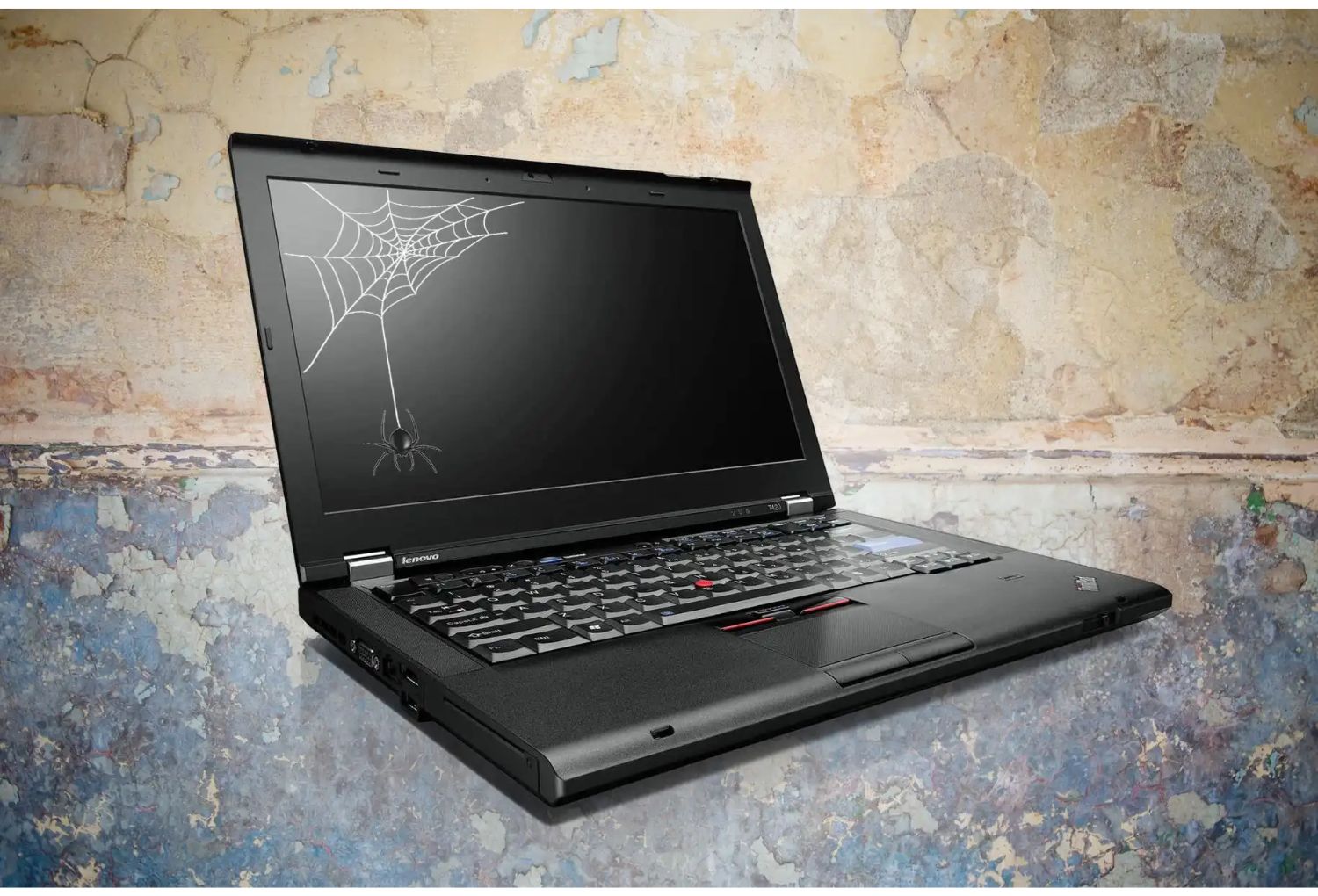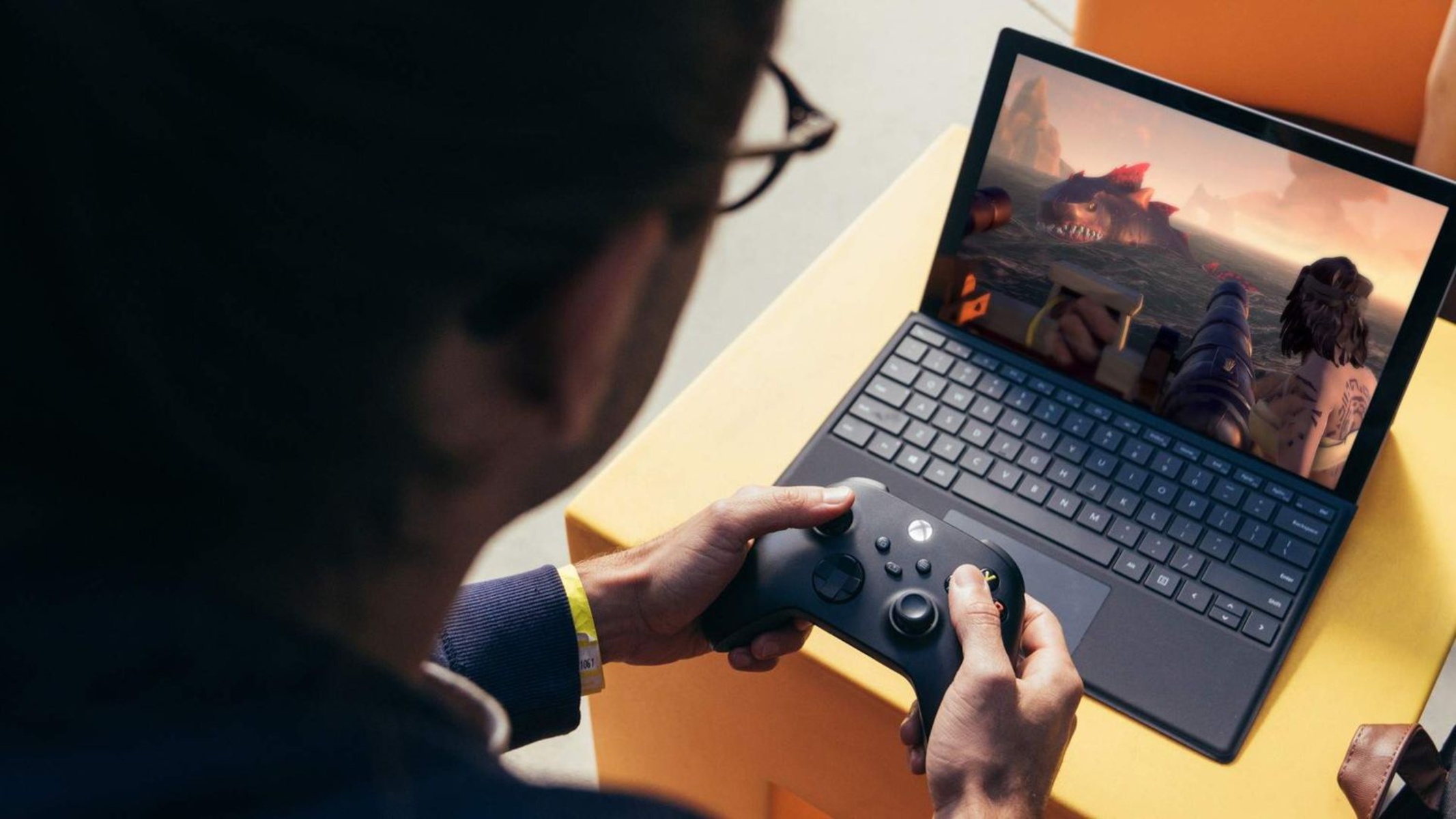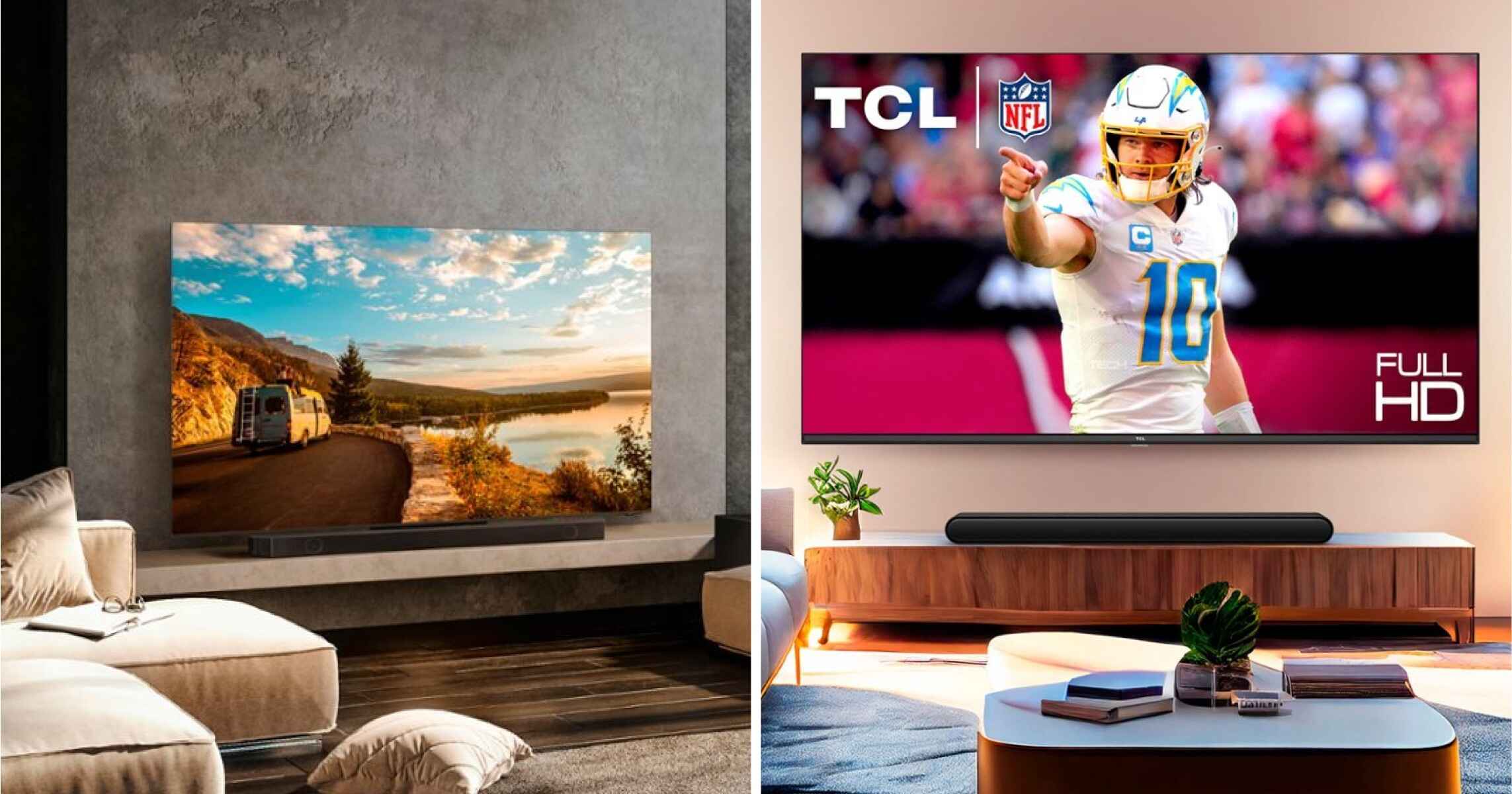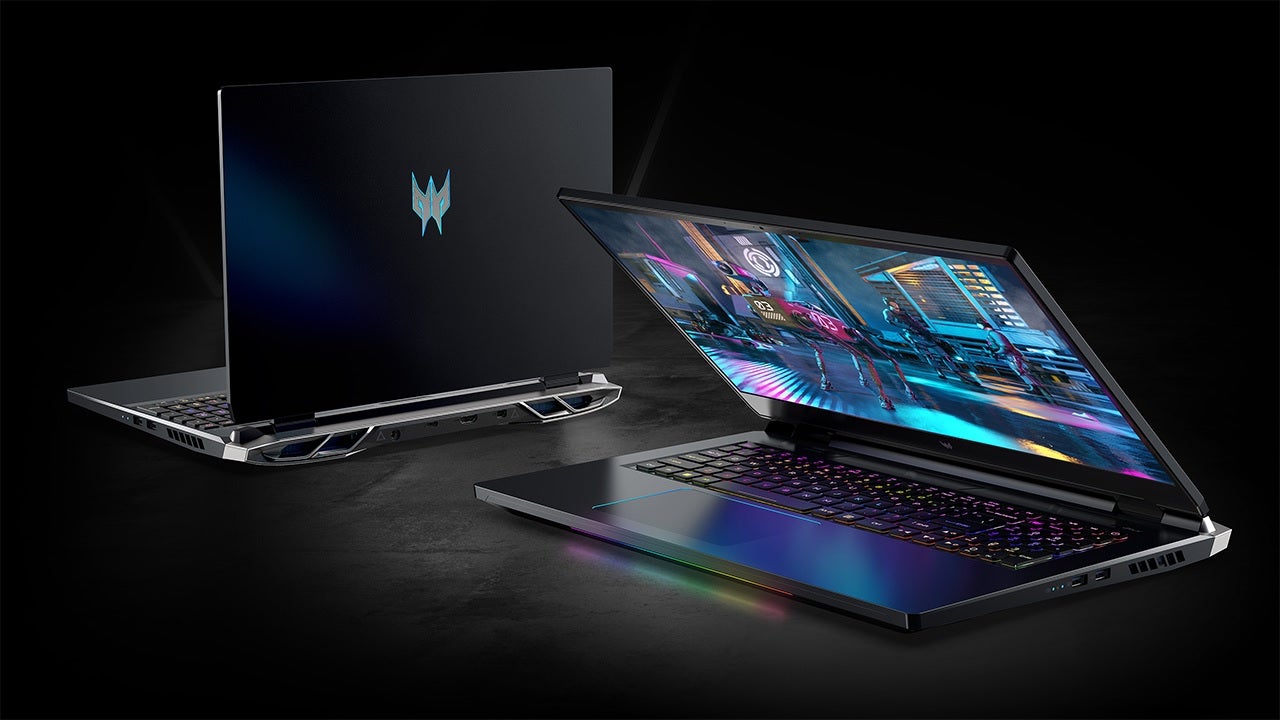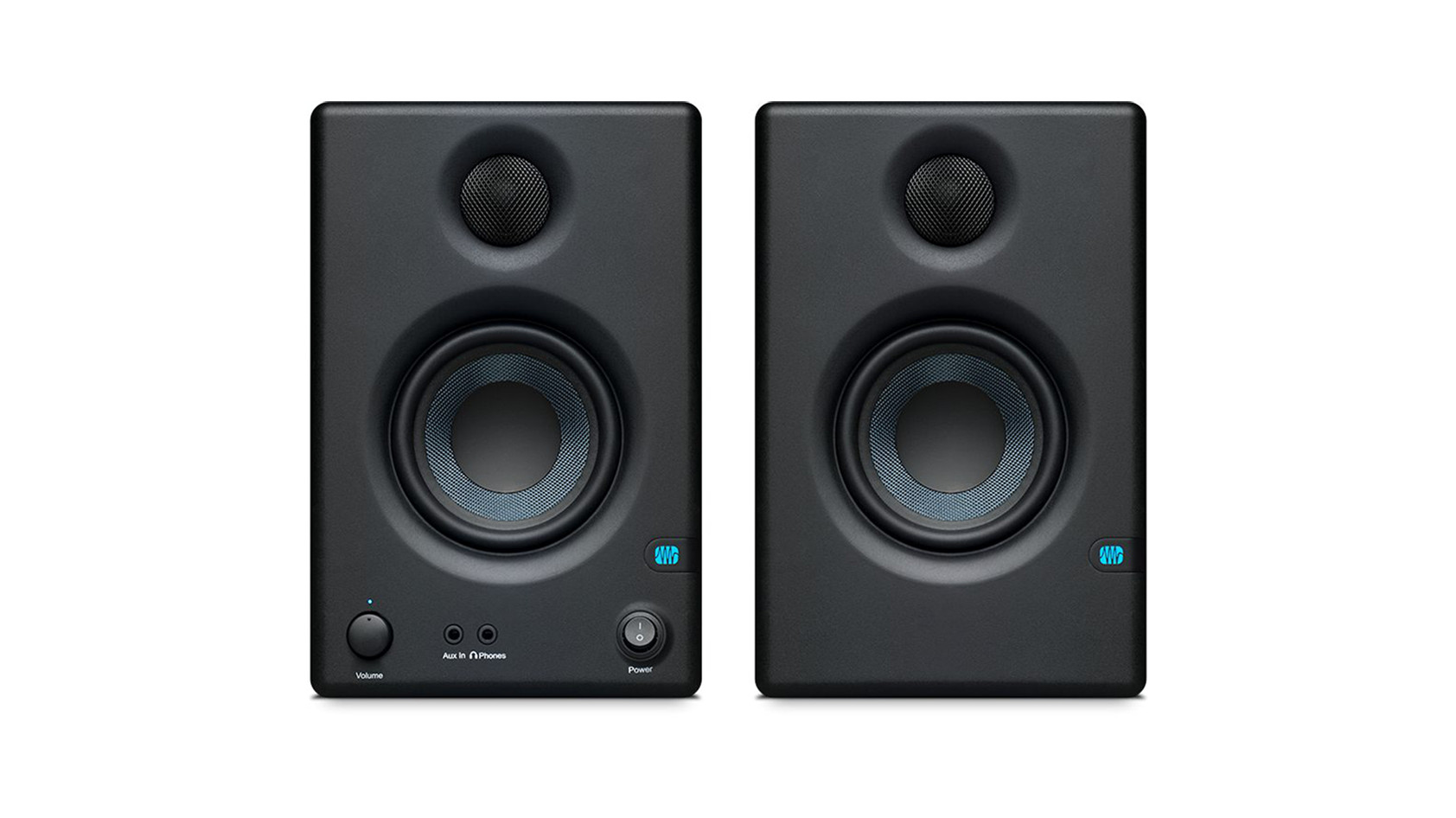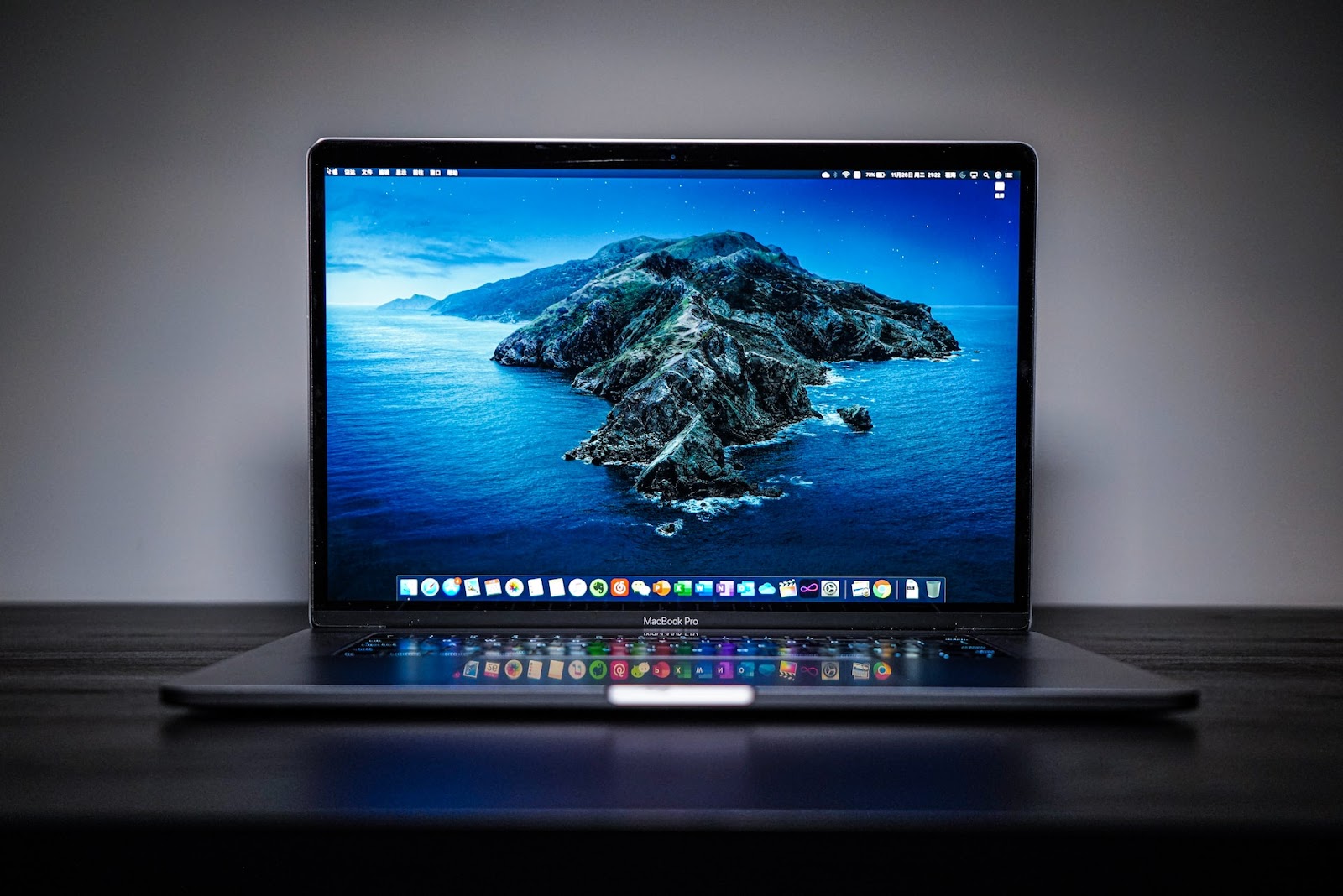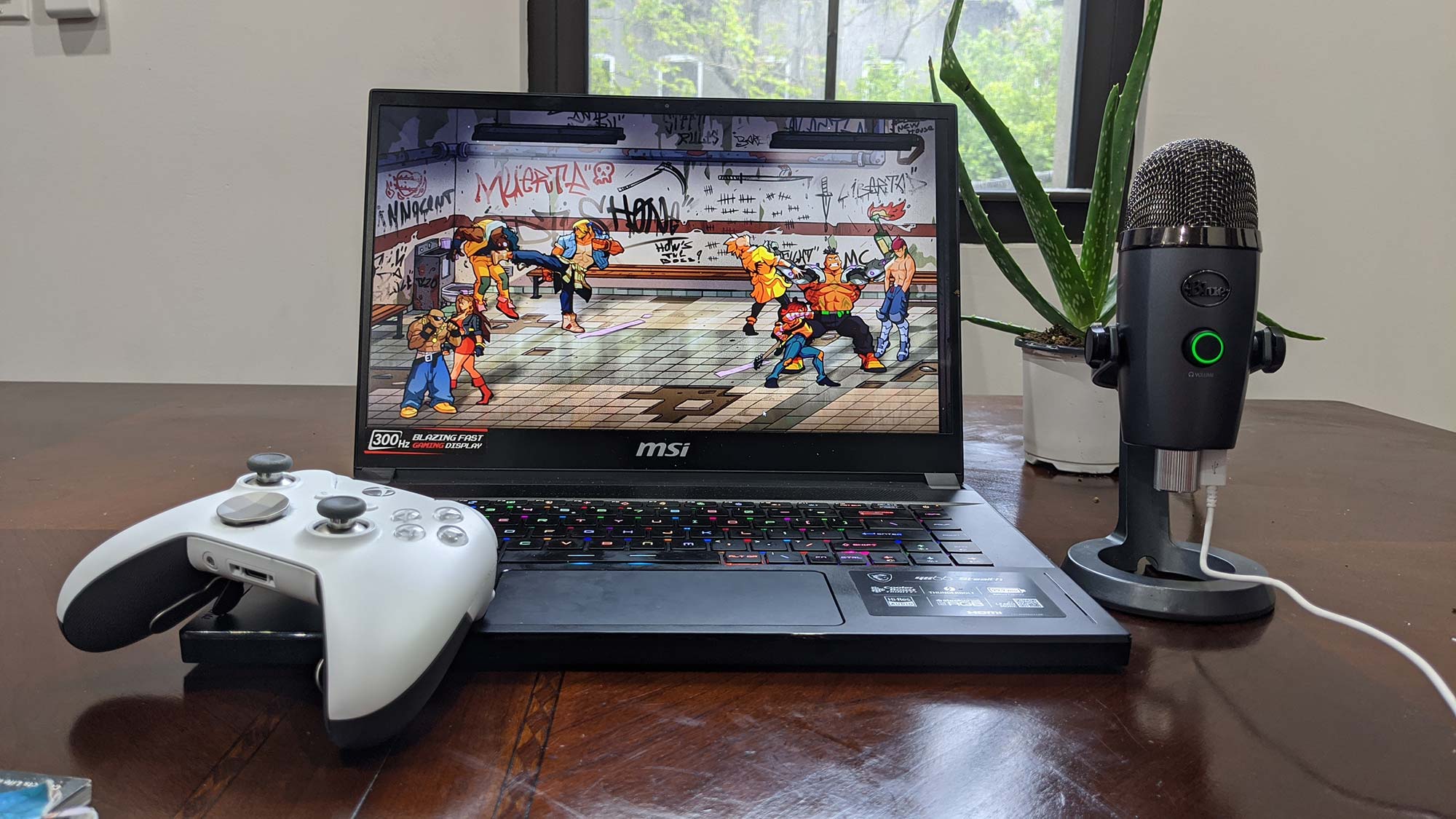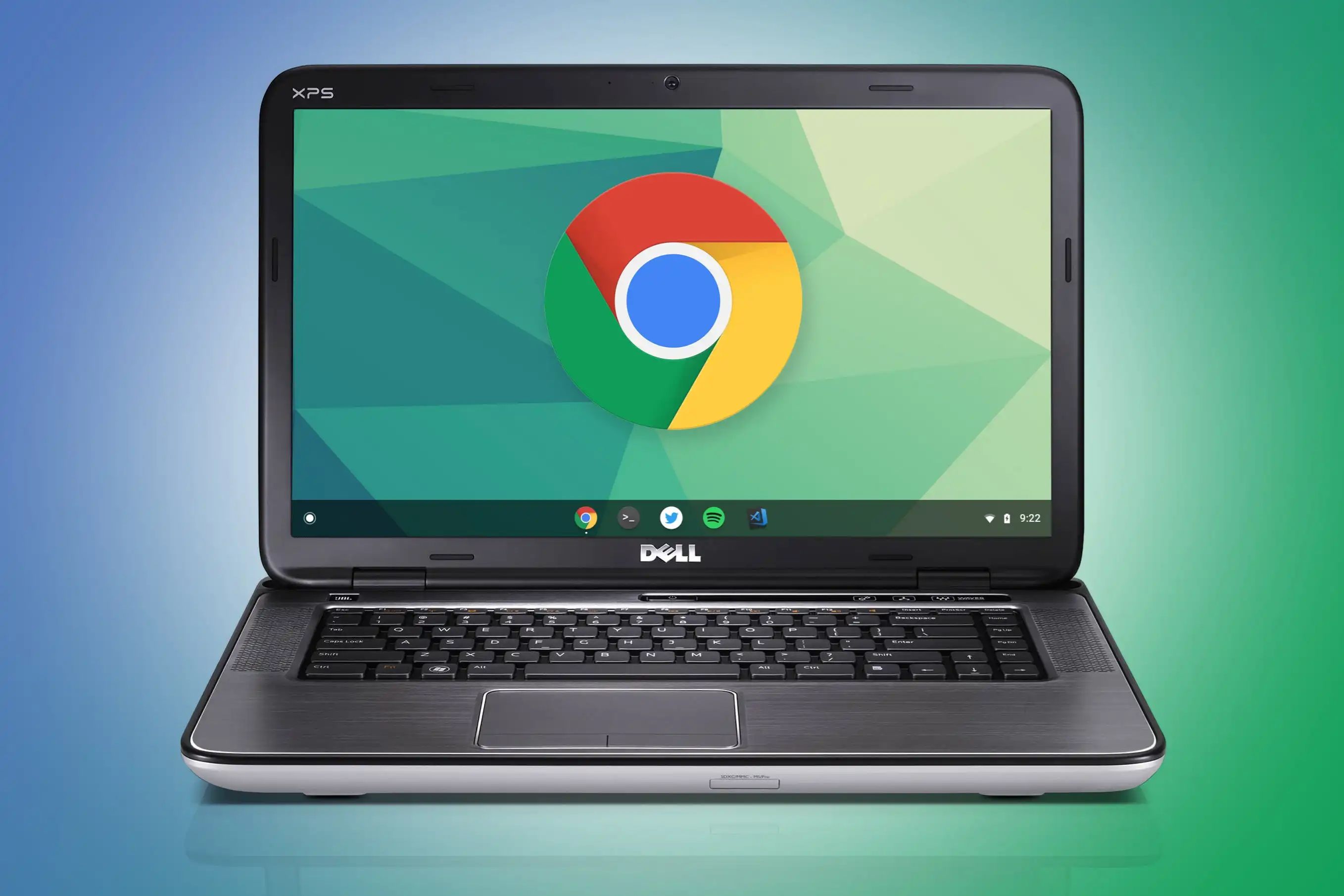Introduction
Are you tired of low frame rates, laggy gameplay, and limited graphics on your current laptop when trying to play your favorite games? Upgrading to a high-end gaming laptop may seem like the most straightforward solution, but it can also be quite expensive. However, don’t despair just yet! There’s still hope for your low-end laptop to deliver a satisfying gaming experience.
By making a few strategic tweaks and upgrades, you can transform your humble machine into a respectable gaming laptop. In this guide, we’ll explore the various steps you can take to optimize and enhance your laptop’s performance specifically for gaming purposes.
Before we dive into the specifics, let’s address why you might want to consider upgrading your laptop for gaming in the first place. Gaming is a popular and immersive form of entertainment, and it’s only natural to desire a smooth and enjoyable experience while playing your favorite titles. A low-end laptop, however, is often ill-equipped to handle the demanding graphics and processing power required by modern games.
By taking the time to optimize and upgrade your current laptop, you can greatly enhance its gaming capabilities without breaking the bank. Not only will this save you money, but it also allows you to breathe new life into your trusted machine, prolonging its overall lifespan and usefulness.
Throughout this guide, we’ll discuss various strategies and hardware upgrades that can help you maximize your laptop’s potential for gaming. From optimizing software settings to upgrading key components like RAM and storage, we’ll cover it all. By the end, you’ll have a solid understanding of how to turn your low-end laptop into a gaming powerhouse.
Why Upgrade Your Low-End Laptop for Gaming?
At first glance, it may seem unnecessary or even impractical to consider upgrading your low-end laptop for gaming. After all, why invest time and money into a machine that was not specifically designed for gaming in the first place? However, there are several compelling reasons why upgrading your low-end laptop can be a worthwhile endeavor.
First and foremost, upgrading your laptop allows you to enjoy a much more immersive gaming experience. Imagine playing your favorite games with smoother frame rates, sharper graphics, and reduced lag. With the right upgrades, you can transform your laptop into a capable gaming device that can handle even the most demanding titles.
Additionally, upgrading your laptop can save you the significant cost of purchasing a new gaming laptop. High-end gaming laptops can easily cost several thousand dollars, which may not be a feasible option for many gamers. By upgrading your existing machine, you can achieve similar performance improvements at a fraction of the cost.
Moreover, upgrading your laptop for gaming purposes can extend its overall lifespan and usability. Over time, as technology advances and game requirements become more demanding, your current laptop may struggle to keep up. By upgrading key components like RAM, storage, and graphics, you can future-proof your laptop and ensure it remains compatible with upcoming game releases.
Additionally, upgrading your low-end laptop for gaming can be a fun and rewarding DIY project. It allows you to delve into the world of hardware upgrades and optimization, gaining valuable knowledge and experience along the way. This hands-on approach enables you to have a deeper understanding of your machine’s capabilities and limitations.
Lastly, upgrading your laptop for gaming purposes can provide you with the flexibility to play games wherever you go. Gaming laptops are typically bulky and heavy, making them less portable than their non-gaming counterparts. By upgrading your existing laptop, you can enjoy gaming on the go without the added weight and inconvenience of a dedicated gaming laptop.
Overall, upgrading your low-end laptop for gaming is a cost-effective, practical, and enjoyable way to enhance your gaming experience. Whether you’re a casual gamer or a dedicated enthusiast, the benefits of upgrading your laptop are numerous. In the following sections, we will explore the specific steps you can take to optimize and transform your low-end laptop into a capable gaming machine.
Understanding Your Laptop’s Limitations
Before diving into the process of upgrading your low-end laptop for gaming, it’s crucial to have a clear understanding of its limitations. Every laptop has its own set of specifications that determine its capabilities, and knowing these limitations will help you make informed decisions regarding upgrades and optimizations.
One of the primary limitations of a low-end laptop is its hardware. These laptops are typically equipped with lower-end processors, limited RAM, and integrated graphics cards. These specifications may suffice for basic tasks like web browsing and document processing but may struggle to handle graphics-intensive games.
Another crucial aspect to consider is the cooling system of your laptop. Low-end laptops often have limited cooling capabilities, which can result in overheating during extended gaming sessions. Overheating can lead to performance throttling and potential damage to your hardware if not addressed properly.
Storage is another significant limitation for low-end laptops. Most low-end models come with traditional hard drives with slower read/write speeds. This can result in longer loading times for games and slower overall system performance compared to laptops equipped with solid-state drives (SSDs).
Furthermore, low-end laptops may have a limited number of ports and connectivity options. This can impact your ability to connect additional peripherals such as external monitors, gaming controllers, or external storage devices.
Lastly, it’s important to consider your laptop’s age and overall condition. Older laptops may have outdated hardware and may not be compatible with certain upgrades. It’s advisable to research the specific model of your laptop to determine its upgrade capabilities.
By understanding these limitations, you can set realistic expectations for your low-end laptop’s gaming performance. It’s essential to have a clear understanding of what your laptop can and cannot handle before proceeding with any upgrades or optimizations.
In the following sections, we will explore various strategies and upgrades to overcome these limitations and maximize your low-end laptop’s potential for gaming. We’ll address optimizing software settings, upgrading hardware components, improving cooling solutions, and even exploring external GPU options. By leveraging these solutions effectively, you can get the most out of your low-end laptop and enjoy a significantly improved gaming experience.
Choosing the Right Games for Your Low-End Laptop
When it comes to gaming on a low-end laptop, it’s important to be mindful of the games you choose to play. Not all games are created equal when it comes to system requirements, and selecting the right games can make a significant difference in your gaming experience on a low-end machine.
First and foremost, consider the system requirements of a game before you decide to install and play it on your low-end laptop. Most game developers provide minimum and recommended system requirements for their titles, which outline the necessary hardware specifications for optimal performance. Make sure to compare these requirements with the specifications of your laptop to determine if the game is compatible.
Opt for games that are specifically designed to be lightweight or have low system requirements. Indie games, older classics, and retro-styled games are often a good fit for low-end laptops, as they are designed to run smoothly on a wide range of hardware configurations.
Another consideration is the graphics settings and options within each game. Most modern games offer the flexibility to adjust graphics settings to optimize performance. Look for options such as lowering the resolution, disabling or reducing anti-aliasing and texture quality, and adjusting shadow and lighting effects. By tweaking these settings, you can improve the game’s performance on your low-end laptop.
Consider the genre of the game as well. Certain genres, such as turn-based strategy, puzzle, and platformer games, tend to be less demanding in terms of hardware requirements compared to graphically intensive open-world or first-person shooter games. Prioritize games that align with your laptop’s capabilities to ensure a smoother and more enjoyable gaming experience.
Additionally, consider multiplayer games that have dedicated servers or matchmaking systems. Server-based multiplayer games often offload much of the game’s processing power to the server, relieving some of the strain on your low-end laptop. This can result in improved performance compared to games that rely heavily on your laptop’s processing capabilities for multiplayer interactions.
Lastly, take advantage of cloud gaming services or game streaming platforms. These services allow you to play games on your low-end laptop by offloading the processing power to remote servers. The game is streamed to your laptop, allowing you to enjoy high-quality gaming experiences without needing powerful hardware. This can be an excellent solution for low-end laptop gamers who want to play graphically demanding games.
Overall, choosing the right games for your low-end laptop is essential to ensure a smooth and enjoyable gaming experience. By considering the system requirements, adjusting graphics settings, and exploring lightweight, genre-appropriate and server-based games, you can make the most out of your low-end laptop’s capabilities and enjoy hours of gaming entertainment.”
Essential Software and Driver Updates
When it comes to optimizing your low-end laptop for gaming, one of the first steps you should take is to ensure that your software and drivers are up to date. Regular software and driver updates can significantly improve your laptop’s overall performance and compatibility with the latest games.
Start by updating your operating system to the latest version available. Operating system updates often include bug fixes, performance improvements, and security enhancements that can benefit gaming performance. These updates can also ensure that your laptop remains compatible with the latest game releases and features.
In addition to the operating system, it’s crucial to keep your graphics drivers up to date. Graphics drivers play a vital role in delivering smooth and optimized gaming performance. You can usually download the latest drivers directly from the manufacturer’s website. Installing the latest drivers ensures that your laptop can take advantage of the latest optimizations and bug fixes, resulting in better gaming performance.
Furthermore, keep all your other drivers up to date as well. This includes drivers for your network adapter, sound card, and any other peripherals connected to your laptop. Outdated drivers can lead to compatibility issues, performance glitches, and even crashes during gameplay. Regularly check the manufacturer’s websites for driver updates or use third-party tools that can help automate the process.
Aside from updating drivers, consider installing software that can optimize your laptop’s performance specifically for gaming. There are several reputable software solutions available that can fine-tune system settings, disable unnecessary background processes, and prioritize resources for gaming. These programs can help squeeze out extra performance from your low-end laptop and ensure a smoother gaming experience.
Lastly, clean up your laptop’s storage regularly to free up disk space. Uninstall any programs or applications that you no longer use, delete temporary files and folders, and run disk cleanup utilities to remove unnecessary files. A clutter-free storage system can enhance your laptop’s overall performance and provide more room for games to run smoothly.
By regularly updating your software and drivers and optimizing your laptop’s performance, you can ensure that your low-end laptop is in the best possible shape for gaming. These simple steps can often yield noticeable improvements and set a solid foundation for the subsequent hardware upgrades and optimizations we’ll discuss in the following sections.
Optimizing Your Laptop’s Performance
To maximize your low-end laptop’s performance for gaming, it’s important to optimize its settings and configurations. By fine-tuning various aspects of your laptop’s performance, you can squeeze out extra power and ensure a smoother gaming experience. Here are some key optimization steps to consider:
First, configure your power settings to prioritize performance. Access the power options in your operating system’s control panel and select the “High Performance” or “Performance” power plan. This ensures that your laptop utilizes its maximum processing power and doesn’t throttle performance to conserve energy.
Next, optimize your visual settings by disabling unnecessary effects and animations. In your operating system’s settings, reduce or disable visual effects such as transparency, animations, and shadows. These settings can consume valuable system resources and impact overall gaming performance.
Disable background applications and startup programs that are not essential for gaming. These applications consume system resources and can cause performance slowdowns or increase loading times in games. Use the task manager or system settings to prevent unnecessary programs from running in the background.
Regularly clean up your laptop’s hard drive to free up space and improve performance. Remove unused files, uninstall unnecessary applications, and run disk cleanup utilities. This helps optimize storage utilization and ensures that your laptop has enough free space to operate efficiently.
Consider using a performance optimization tool to automate the process of optimizing your laptop. These tools can analyze your system’s performance, clean up junk files, and optimize various settings with a few clicks. Be sure to choose a trusted and reputable tool from a reliable software provider.
Manage your laptop’s cooling system to prevent overheating and performance throttling. Ensure that the air vents are not blocked and use a laptop cooling pad or an elevated surface to improve airflow and dissipate heat. Overheating can have a significant impact on gaming performance, so proper cooling is crucial.
Lastly, keep your laptop’s operating system and software up to date with the latest patches and updates. System updates often include bug fixes, security patches, and performance improvements that can enhance the overall gaming experience on your laptop.
By optimizing your laptop’s performance through these steps, you can make the most out of its capabilities and ensure a smoother gaming experience. Remember to regularly revisit and adjust these settings to adapt to your gaming needs and to keep your laptop running at its best.
Overclocking Your GPU and CPU
If you’re looking to extract more performance from your low-end laptop for gaming, overclocking your GPU (Graphics Processing Unit) and CPU (Central Processing Unit) can be an effective strategy. Overclocking involves increasing the clock speeds of these components to achieve higher performance. However, it’s important to proceed with caution and follow proper guidelines when overclocking. Here’s what you need to know:
Before overclocking, research your specific GPU and CPU models to understand their capabilities and limitations. Not all laptops allow overclocking, and even if they do, the extent to which you can overclock may vary. Consult the manufacturer’s documentation or search for online resources specific to your laptop’s model.
Start by using reliable overclocking software designed for your specific GPU and CPU. These software tools provide a user-friendly interface to adjust clock speeds, voltages, and other settings. Popular options include MSI Afterburner for GPUs and Intel Extreme Tuning Utility for CPUs.
Begin the process by gradually increasing the clock speeds. Increase the speeds in small increments and test the stability and temperature of your laptop after each adjustment. Use benchmarking tools to assess performance gains and monitor the temperature levels using software like HWMonitor or Core Temp.
When overclocking, you might need to adjust voltage settings to maintain stability. Increasing voltage can enable higher clock speeds, but excessive voltage can lead to overheating and instability. Find a balance between clock speeds and voltage that yields optimal performance without sacrificing stability.
Monitor and manage the temperature of your laptop during overclocking. Higher clock speeds can generate more heat, and low-end laptops may have limited cooling capabilities. Use cooling pads and ensure proper ventilation to prevent overheating. If temperatures become too high, consider dialing back the overclock or investing in additional cooling solutions.
Test the stability of your overclocked settings by running stress tests and benchmarking tools for an extended period. These tests simulate heavy workloads to ensure that your laptop can handle the increased clock speeds without crashing or producing errors. If instability occurs, dial back the overclocking settings until stability is achieved.
Always remember that overclocking carries some degree of risk, and it can void warranties or cause permanent damage if done improperly. Proceed with caution and take your time to thoroughly understand the process. If you’re unsure, seek guidance from experienced users or professional technicians.
Overclocking can provide a noticeable improvement in gaming performance, especially on low-end laptops. However, it’s essential to weigh the potential benefits against the risks and ensure that your laptop has adequate cooling and stability measures in place. With proper research, careful adjustments, and monitoring, you can unleash the hidden potential of your GPU and CPU and enjoy a significant boost in gaming performance.
Upgrading Your RAM
If you’re looking to boost your low-end laptop’s gaming performance, one of the most effective hardware upgrades you can make is increasing the amount of RAM (Random Access Memory). RAM plays a crucial role in gaming, as it allows your laptop to quickly access and store data for active programs. Upgrading your RAM can result in improved multitasking capabilities, faster loading times, and smoother gameplay. Here’s what you need to know:
First, determine the maximum amount of RAM your laptop can support. Consult the manufacturer’s documentation or visit their website to find out the maximum capacity and type of RAM your laptop can accommodate. Consider factors such as the number of memory slots and the maximum supported memory module size.
Next, decide on the amount of RAM you want to upgrade to. Consider the types of games you play and the system requirements of those games. While 8GB of RAM is typically sufficient for most gaming needs, upgrading to 16GB can provide a more comfortable buffer, especially for more demanding titles or if you plan on multitasking while gaming.
Purchase RAM modules that are compatible with your laptop’s specifications. Make sure to match the type (DDR3, DDR4, etc.), frequency (MHz), and form factor (SODIMM for laptops) with the requirements of your laptop. It’s also advisable to purchase RAM modules from reputable manufacturers to ensure compatibility and reliability.
Before installing the new RAM, ensure that your laptop is powered off and unplugged. Open the access panel on the bottom or side of your laptop that houses the RAM slots. Carefully insert the new RAM module into the slot at a 45-degree angle and press it down until it clicks into place. Repeat the process if you are installing multiple modules.
After installing the new RAM, power on your laptop and enter the BIOS settings. Verify that the new RAM is detected and check for any available BIOS updates that may optimize compatibility or performance with the upgraded RAM. Save any changes and exit the BIOS settings.
Once your laptop is back into the operating system, confirm that the new RAM is recognized by checking the system properties or using third-party software. You should see the increased amount of RAM reflected in the system information.
After upgrading your RAM, you should notice a significant improvement in your laptop’s gaming performance. More RAM allows your laptop to run games and resource-intensive tasks more smoothly, resulting in reduced stuttering, faster rendering, and improved overall responsiveness.
Lastly, it’s worth noting that upgrading your RAM alone won’t magically transform your laptop into a high-end gaming machine. The impact of RAM upgrades may vary depending on other factors such as your CPU and GPU capabilities. However, upgrading your RAM is a cost-effective way to enhance your low-end laptop’s gaming performance and improve the overall user experience.
Upgrading Your Hard Drive to an SSD
When it comes to boosting your low-end laptop’s gaming performance, upgrading your traditional hard drive (HDD) to a solid-state drive (SSD) can make a significant difference. An SSD is faster, more reliable, and provides better overall performance compared to an HDD. This upgrade can result in faster boot times, reduced loading times, and improved system responsiveness. Here’s what you need to know:
Start by understanding the storage requirements of your games. Consider the size of the games you play and the total amount of storage space you need. It’s common for modern games to take up a significant amount of storage, so make sure you choose an SSD with adequate capacity. Aim for at least 240GB or higher to accommodate your operating system, essential software, and a few games.
Research and choose the right type of SSD for your laptop. There are two main types: SATA SSDs and NVMe SSDs. SATA SSDs are more common and provide significant performance improvements over HDDs. NVMe SSDs, on the other hand, offer even faster speeds but may require a compatible motherboard or adapter for installation.
Purchase a reputable SSD from a reliable manufacturer. Look for SSDs that provide a good balance between performance, reliability, and price. Read reviews and consider the warranty offered by the manufacturer to make an informed decision.
Before installing the new SSD, back up all your important data from the existing HDD. This ensures that your files and applications are safely preserved. You can use external storage devices or cloud storage services to back up your data.
Open your laptop and locate the existing HDD. Carefully remove any screws or brackets holding the HDD in place and disconnect the necessary cables. Gently slide out the HDD and replace it with the new SSD. Secure the SSD in place with screws or brackets and connect the cables accordingly.
Once the physical installation is complete, you’ll need to install the operating system (OS) on the new SSD. Create a bootable USB drive with your preferred OS installer or use the manufacturer’s utility software if provided. Follow the instructions to install the OS on the new SSD.
After the OS installation, make sure to update your drivers and transfer any backed-up files and applications to the new SSD. You can also reinstall your games onto the SSD to take full advantage of its speed and performance benefits.
Once the process is complete, you’ll experience a significant improvement in your laptop’s overall performance. Boot times will be faster, programs will load quicker, and games will run smoother. The increased speed and responsiveness of the SSD will enhance your gaming experience and provide a more enjoyable gameplay session.
It’s worth noting that upgrading to an SSD alone won’t miraculously transform your low-end laptop into a high-end gaming machine. The impact will vary depending on other factors like your CPU and GPU capabilities. However, the upgrade to an SSD is a worthwhile investment that will greatly improve system performance, reduce loading times, and enhance your overall laptop experience for gaming and other tasks.
Cooling Solutions for Your Laptop
Overheating is a common issue in low-end laptops when pushed to their limits during gaming sessions. Excessive heat can result in performance throttling, decreased system stability, and potential long-term damage to your hardware. Investing in proper cooling solutions for your laptop is essential to maintain optimal performance and reliability. Here are some cooling solutions you can consider:
First and foremost, ensure that your laptop’s air vents are clean and unobstructed. Dust and debris can accumulate over time and block airflow, leading to increased temperatures. Use compressed air or a soft brush to clean the vents regularly and keep them free from any blockages.
Invest in a laptop cooling pad or a laptop cooling stand. These accessories provide additional airflow to the bottom of your laptop, dissipating heat more effectively. Cooling pads come with built-in fans that generate additional airflow, while cooling stands elevate your laptop to improve ventilation. Look for options with adjustable fan speeds and ergonomic designs for comfort.
Consider applying thermal paste to your laptop’s CPU and GPU. Over time, the thermal paste can dry out or degrade, resulting in poor heat transfer between the components and the cooling system. Applying new thermal paste can improve heat dissipation and lower overall temperatures. Research your laptop model or seek professional help to perform this task if you’re not familiar with the process.
Enhance the cooling capabilities of your laptop by using specialized cooling pads that contain gel or coolant. These pads provide additional cooling through heat absorption, reducing temperatures more effectively. Place the cooling pad underneath your laptop during gaming sessions to help dissipate heat faster.
Consider undervolting your laptop’s CPU. Undervolting involves reducing the voltage supplied to the CPU, which can decrease power consumption and heat generation. This process requires specific software or BIOS settings and should only be performed if you have a good understanding of your laptop’s specifications. Undervolting can help keep temperatures in check without sacrificing performance.
If you are comfortable doing so, you can try repasting your CPU and GPU with a high-quality thermal paste. This involves disassembling your laptop and applying new thermal paste to ensure optimal heat transfer between the components and the cooling system. However, keep in mind that this process can void your warranty and should only be attempted by experienced individuals.
Lastly, consider using external cooling solutions. External laptop cooling fans or coolers can provide an extra level of cooling for prolonged gaming sessions. These devices direct cool air towards your laptop, reducing temperatures and improving performance. USB-powered external fans or coolers are widely available and easy to use.
By implementing these cooling solutions, you can effectively combat overheating issues and maximize your low-end laptop’s gaming performance. It’s important to monitor your laptop’s temperatures regularly and adjust cooling solutions as needed to ensure that your laptop remains within safe temperature ranges. With proper cooling, you can enjoy longer gaming sessions with improved stability, reduced throttling, and increased overall performance.
External GPU Solutions for Improved Gaming
If you’re looking to significantly enhance the gaming performance of your low-end laptop, an external GPU (eGPU) can be a game-changer. An eGPU allows you to connect a dedicated graphics card to your laptop, bypassing the limitations of the built-in graphics. This upgrade can provide a significant boost in graphics power, enabling you to run more demanding games and achieve higher frame rates. Here’s what you need to know:
First, verify that your laptop has an available Thunderbolt 3 (USB-C) port. Most eGPU docks rely on Thunderbolt 3 connectivity for seamless integration. Without this port, you won’t be able to connect and utilize an external GPU. Ensure that your laptop is also compatible with external GPU functionality by referring to the manufacturer’s documentation or online resources.
Purchase a compatible external GPU dock and graphics card. eGPU docks come in different sizes and power configurations, so choose one that fits your needs and budget. Research compatibility requirements and compatibility guides provided by both the eGPU manufacturer and your laptop manufacturer. Popular eGPU brands include Razer, Akitio, and Sonnet.
Install the graphics card into the eGPU dock according to the manufacturer’s instructions. Some docks require you to provide your own graphics card, while others may come bundled with one. Ensure that the graphics card is compatible with the dock and meets the power requirements of your intended usage.
Connect the eGPU dock to your laptop using the Thunderbolt 3 cable provided. Make sure the eGPU dock is powered on and connected to an external monitor for optimal performance. The external monitor should be plugged into the eGPU, not your laptop’s onboard HDMI or DisplayPort.
Install the necessary drivers for the external GPU. Visit the manufacturer’s website to download and install the latest drivers for your graphics card. It’s important to keep these drivers updated to ensure compatibility and optimal performance with your laptop and games.
Configure your laptop to utilize the external GPU for gaming. In the graphics settings of your operating system, specify that your laptop should use the external GPU instead of the integrated graphics. Some laptops may require additional configuration steps, such as disabling the internal graphics card via BIOS settings. Refer to your laptop’s documentation for specific instructions.
Once set up, the external GPU will handle the graphics processing for your laptop, enabling you to play more demanding games with higher settings and smoother frame rates. However, keep in mind that the performance gain may be limited by other factors such as your CPU and RAM capabilities.
It’s worth noting that setting up an eGPU can be more complex compared to other upgrades, and the cost can be significant. Additionally, the portability of your laptop may be compromised due to the additional hardware. Consider these factors and weigh the potential benefits against the investment involved before deciding to pursue an eGPU solution.
Overall, an external GPU is a powerful upgrade option for low-end laptops, allowing you to unlock greater gaming potential. By connecting a dedicated graphics card to your laptop, you can enjoy smoother gameplay, improved graphics quality, and the ability to play more demanding titles without having to invest in an entirely new gaming laptop.
Conclusion
Upgrading your low-end laptop for gaming is an exciting and cost-effective way to enhance your gaming experience without breaking the bank. By following the steps outlined in this guide, you can transform your humble machine into a capable gaming laptop that can handle the demands of modern games. Here’s a recap of the key points covered:
– Understand the limitations of your laptop and set realistic expectations for gaming performance.
– Choose games that are compatible with your laptop’s specifications and optimize their settings for better performance.
– Keep your software and drivers up to date to maximize compatibility and performance.
– Optimize your laptop’s settings and configurations for gaming, including power settings and visual effects.
– Consider overclocking your GPU and CPU to squeeze out extra performance, but proceed with caution and research.
– Upgrade your RAM to improve multitasking capabilities and overall system performance.
– Upgrade your hard drive to an SSD for faster boot times, reduced loading times, and improved system responsiveness.
– Implement cooling solutions to prevent overheating and maintain optimal performance.
– Consider an external GPU solution to significantly boost your laptop’s gaming power.
Remember, each laptop is unique, and the effectiveness of these upgrades may vary depending on your specific hardware and requirements. It’s essential to research your laptop’s capabilities, seek professional assistance if necessary, and thoroughly understand the upgrade process before proceeding.
By implementing these upgrades and optimizations, you can breathe new life into your low-end laptop, unlocking its hidden potential as a capable gaming machine. Whether you’re a casual gamer or a dedicated enthusiast, these steps will help you enjoy smoother gameplay, improved graphics, and an overall enhanced gaming experience.







